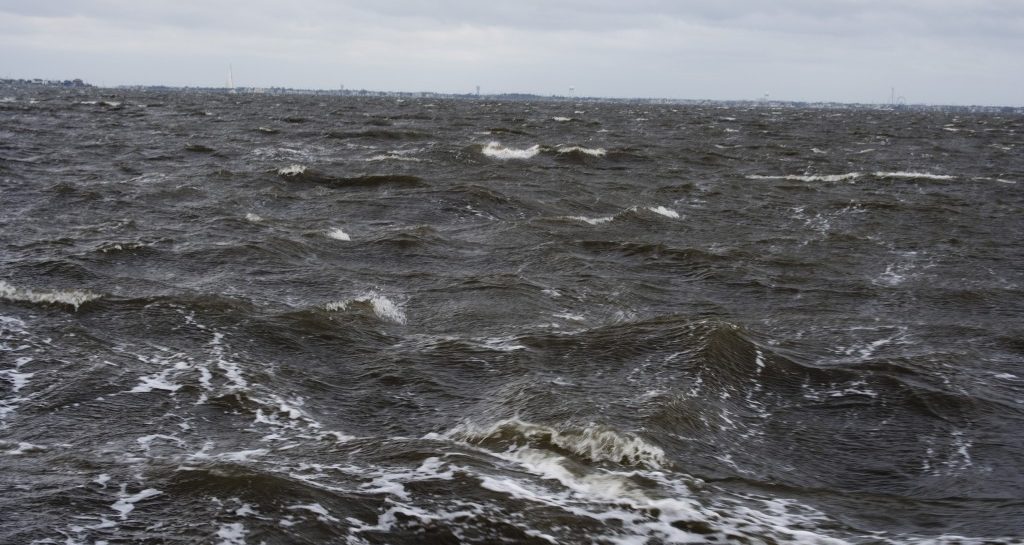
Jen and I openly admit that we’re not the world’s best sailors, but man, we got abused.
We had planned to stay overnight on the boat for our wedding anniversary, which happened to coincide with our sailing club’s cruise to Cattus Island. Cattus Island is in Silver Bay, north of the Rt. 37 drawbridge, and Ocean County was putting on a nature festival there on Sunday. We decided to join the Windjammers since it would be nice to get to spend some time with experienced sailors and we’d be able to get a guided tour through the bridge (we’ve always been a little sketchy on the protocol for requesting an opening, despite my reading on the subject) and of the waters on the other side.
Since our boat is slow, we left slightly before the fleet. We motored to 39 and rigged for sail on the way, then sailed up to the Mathis Bridge and floated around until all 6 boats arrived. Stormy Petrel requested the opening while we listened on Channel 13, and we started shuffling through in an orderly fashion. That is, until I heard a horn behind us, which belonged to a gigantic powerboat 30′ behind me that was slashing between our sailboats at a ridiculous speed. He was kicking up so much wake, I thought Stormy Petrel’s mast was going to hit the bridge as she rode over it. Choice words were issued, and even the bridge operator commented on it when we thanked him for the opening, adding “watch out for the other guy.” We were assured that it wasn’t usually like that.
Now united with the Windjammers in open water, we put up our sails in order to head over to Silver Bay—and promptly ran aground. The wind had shifted and we’d fallen out of the channel and, as usual, as soon as we were in view of other sailors, there we were awkwardly pirouetting on our keel with our sails flogging helplessly. Waterloo turned around and mercifully came back for us, and we opted to follow her on motor rather than risk more silliness. Once we got into Silver Bay, we actually put our jib out and followed the fleet (slowly) into the anchorage.
Stormy Petrel set anchor, and Stormy and April Star rafted up to her. We then tied ourselves to Stormy, and later Nora rafted to April Star. Waterloo anchored separately, and in the evening, we were joined by Mystique which also anchored individually. We were told to bring something for “pot luck” and showed up with a nice Asian chicken salad, but quickly realized that it was supposed to be more of a finger food thing as no one else brought anything that required dishes (which makes perfect sense in retrospect…who wants to do dishes on a boat?) We covertly kept our salad on ice and dug up a couple boxes of crackers from our snack bag. It had also occurred to us that we totally forgot to get fuel for our stove, so we’d be going without the dinner that we had brought. Without question, if we had asked any of the other boats would have let us use their stoves, but we felt dumb and didn’t want to make a big deal about it.
There were actually plenty of appetizers as we all gathered on Stormy Petrel and we had a great time hanging out with other sailors. Being our first raft up, I asked how many boats one anchor would hold, but it didn’t seem to be a big deal and we were regaled with stories of high winds, lightning strikes, water spouts, and every sort of nautical ghost story, some of which turned out to be more prophetic than others. Although I’ve never slept that well on our boat, I thought that I had a chance that night after a couple Festbiers and without the worry of how well we had anchored. At some point in the middle of the night, however, we started really bucking as the wind howled to a sustained 20-25kts. We hadn’t flaked our main sail or put the cover on, so I guess around 3:00am or so we got up to lash everything down, take down the ensign, and reduce windage as much as possible. Ron was up too, and talked to me about putting out another anchor, just in case (though I don’t think we budged with the amount of chain he had out). With gusts approaching 35kts and all kinds of crazy noises from the rafted boats riding wildly at anchor, I didn’t really sleep at all. I got up on deck several times, not doing a whole lot but checking our lines and watching the boats, rigged-for-red, bob at anchor.
The forecast in the morning actually called for deteriorating conditions throughout the day, so we wanted to skip out on the nature festival and head home as soon as possible. As it turned out, the decision had already been made that everyone was leaving, in part to shepherd the smaller boats home. We untied from Stormy and set out on little food or sleep.
Pushing upwind past Waterloo, we were again told “it’s not usually like this,” which had become an unfortunate recurring theme. We circled while waiting for the other boats to separate from the raftup and I found that I was barely able to hold a course with much less than maximum throttle, and we were still in the relative protection of Silver Bay. I put on my foulies and we put the crib boards in.
When we got out into the bay, we had a really hard time. The wind was coming from the northeast which was making for pretty big waves (for us, anyway) from the stern as we traveled south toward the Cedar Creek. When navigation dictated that we were running across the waves, we would ride up a wave with the motor bogging down at full power, then fall off of it, turning uncontrollably and heeling as we slid down and pounded into the bottom of the set. Jen was not happy. I needed both the motor and tiller to maintain any sort of command of the boat, which became exhausting. When we got through the bridge, we were close enough to the other boats to talk and received quite a bit of encouragement. In truth, we were feeling a little less imminent danger on that leg, and once we got around Good Luck Point we could kind of see Trixie’s, which was uplifting. Since everyone else seemed to be effortlessly gliding along on a reefed jib, we decided that if we were going to claim any sort of victory in this day, we would at least try putting up a sail.
…which was completely dumb. The jib wasn’t quite halfway out when we took a gust and got thrown down a wave like the S.S. Minnow in the intro to Gilligan’s Island. I don’t know if it was the lack of mass or the lack of skill, but that experiment was brief and we were back to motoring. At wide open throttle, we were going about the same speed as the waves, and were actually able to surf along on them as long as we kept them directly behind us. If we tried to move across a wave, we got tossed uncomfortably.
With the wind still pushing us, we docked at what seemed like full speed even though I had the motor in reverse. Jen did a good job of jumping off and stopping us. We made it, but we were tired and salty (both literally and figuratively). I’ve tried hard to figure out what we learned from taking such a beating. I suppose any hours at the tiller are useful, even when motoring most of the weekend, and I hope we’ll trust our boat more since we’ve been through some sketchy spots and she’s always been good to us. We also learned a lot about the VHF and dealing with bridge openings. This was weather that we usually would have avoided, but given that we were stuck out there, I was glad to be in the company of some really experienced sailors who wouldn’t have let anything too bad happen to us.
More photos can be found in the gallery.
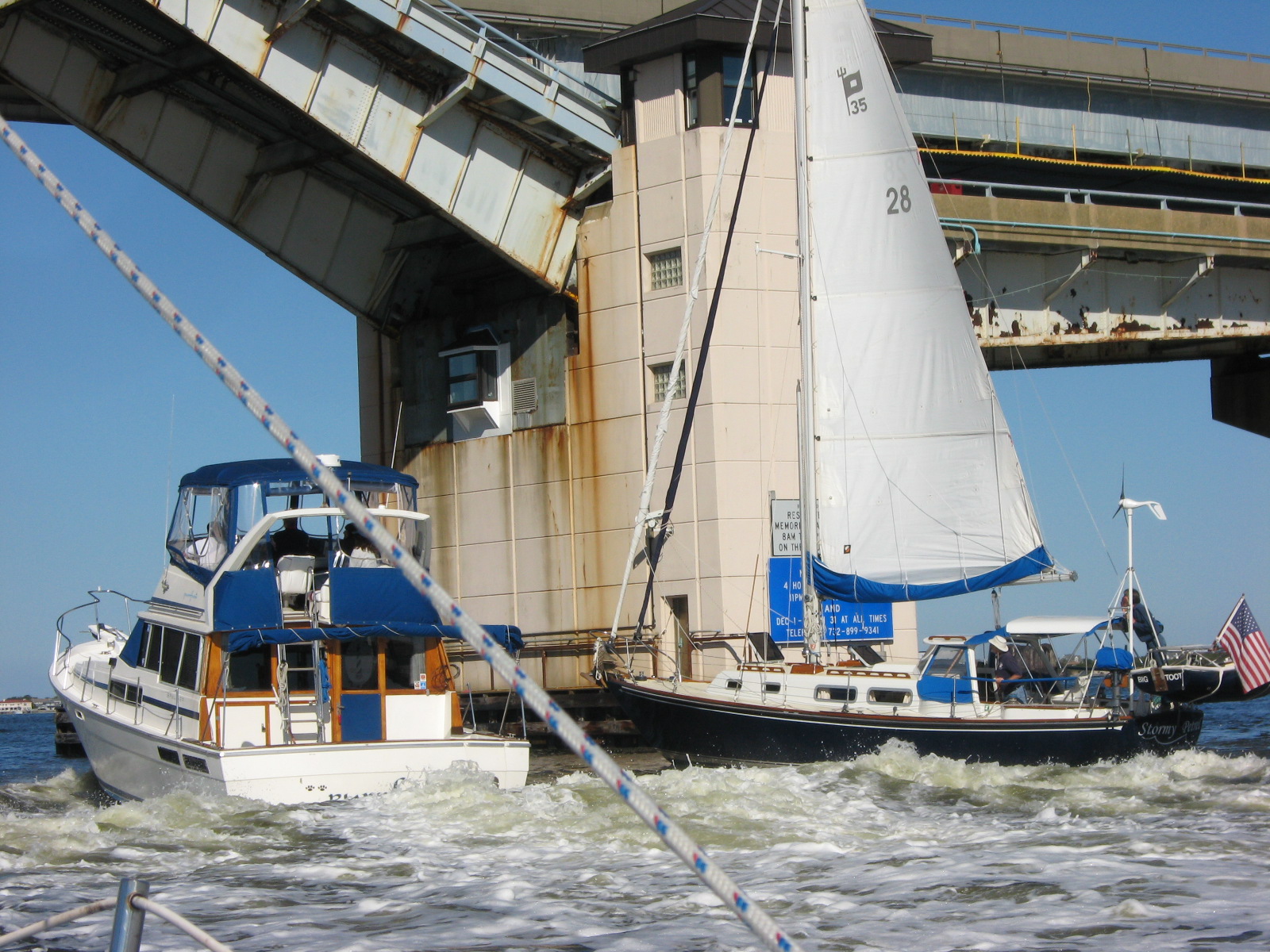

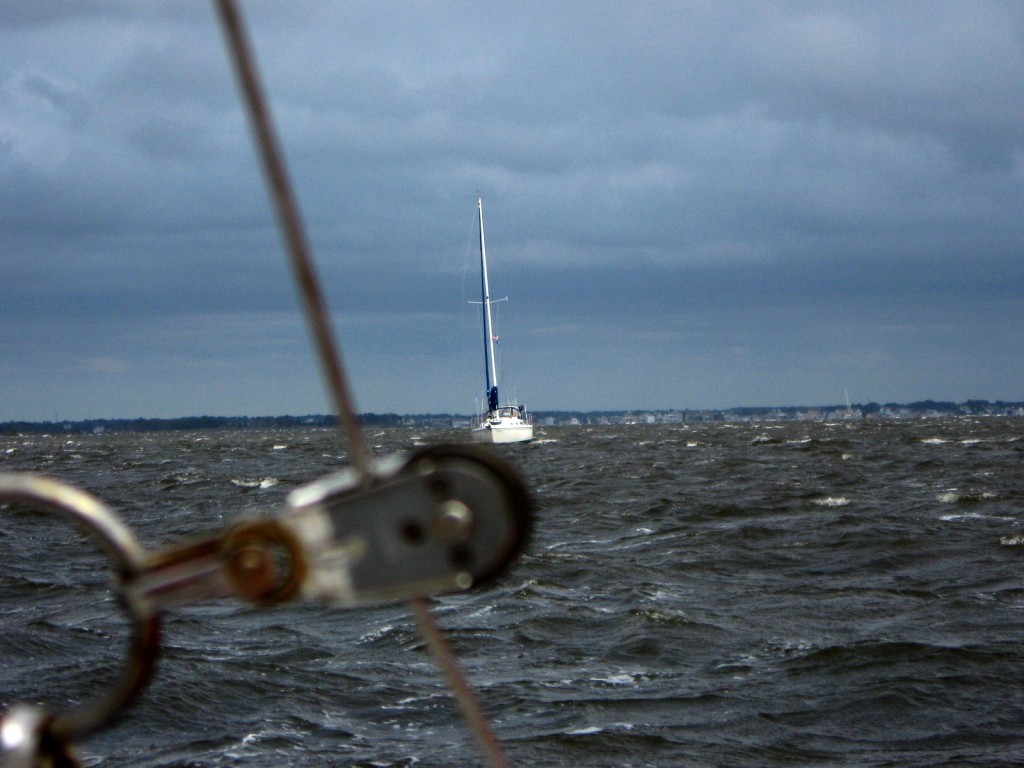
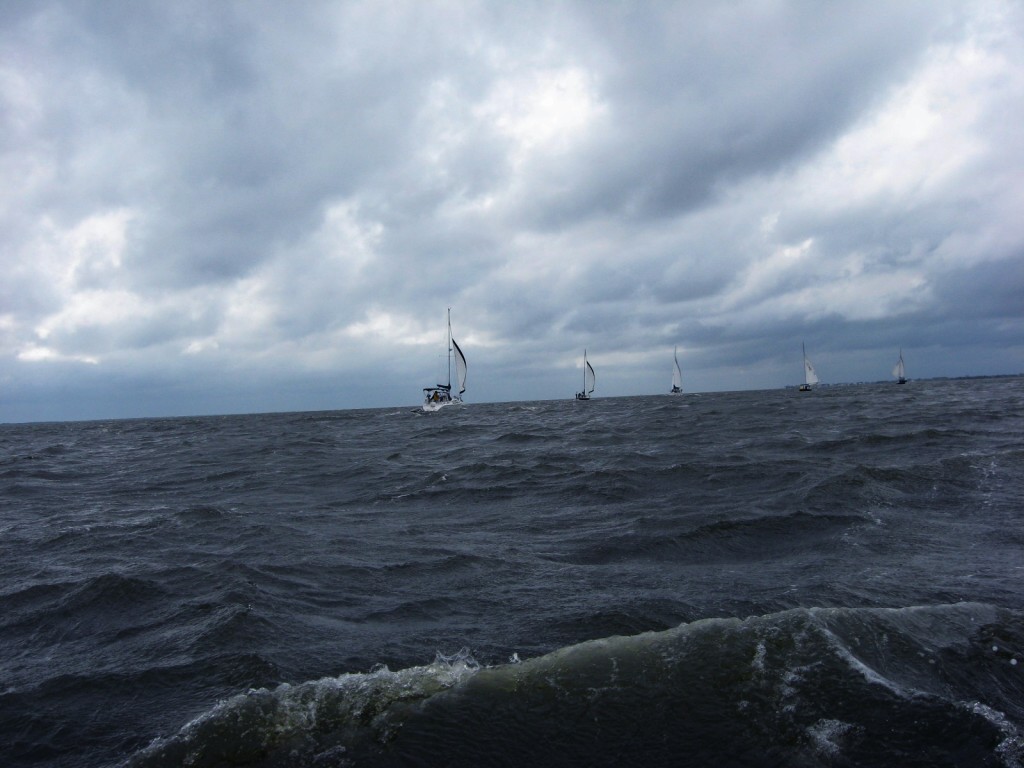
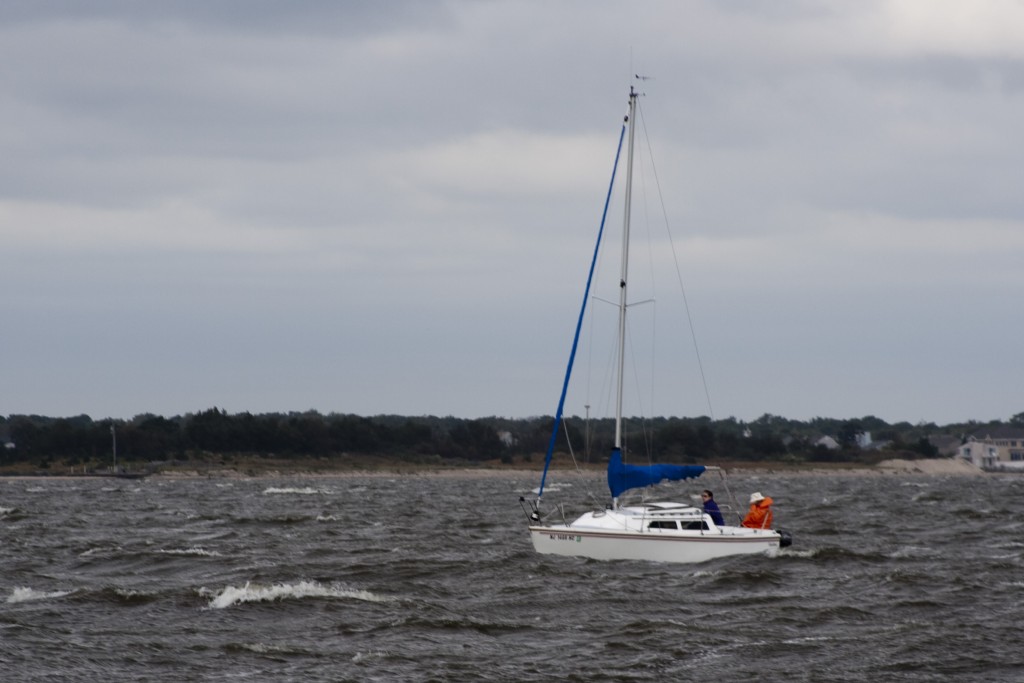
A good…and honest…account. The key lessons? "we were again told "it’s not usually like this," which had become an unfortunate recurring theme"…which is so often the case it’s best to prepare for it and then stand down when it’s nice weather…and that you got home, safely and under your own power. On a smaller boat, the jib might have in big air (and 35 knots is big air for anyone smaller than a destroyer) too much tendency to pull the bow all over the place, overwhelming the tiller’s attempts to steer. A reefed down main, on the other hand, might have given you a steadier ride and just enough gas to get ahead of those waves, and to save what might have become an overtaxed engine. Go out in 20 knots and play, and then try 25 and so on. You’ve already found some limits on your boat, which admittedly is probably a little tender for those sort of conditions, but most boat limits are elastic when faced with a growing sense of seamanship. Fair winds.